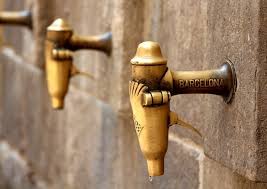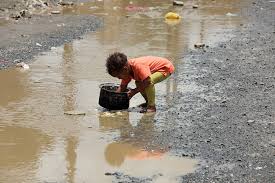Generally, there is distinction between physical and economic scarcity. In the case that water demand cannot be met with available supply, like in dry regions, then the region is considered to be facing physical water scarcity.
On the other hand, where constraints are due to lack of investment, inadequate regulation or pricing, then this situation is considered to be affected by economic water scarcity. This is the situation in most developing countries.
In general, factors that cause water scarcity are many but prominent ones are; shifting demographics, population growth, increasing urbanization and migration, changing consumption patterns leading to increased demand for water, changing hydrologic cycle, caused by anthropogenic activities, climate change and increasing demand and competition for water resources for food, energy, industries.
10 Causes of Water Stress and Scarcity
A brief description is presented on how some of these factors increase demand for water resources.
1. Increased Population Growth and Agricultural Production
Water for agriculture water currently accounts for 70% of all water use and increase in population will lead to increased demand for water.
2. Changes in Diet
Dietary habits change with increase in prosperity. People with consume more foods with high water footprints like meat, vegetable oil.
For example, compare one kilogram of beef requires 15,500 litres of water to produce, while the equivalent amount of wheat requires only 1,300 litres.
3. Industrialization
Globally, energy and industry account for approximately 20% of water use. Water is fundamental to industrialization and as a nation becomes more industrialized, it will require more water.
In addition to increased demand for water, the available fresh water gets depleted as industries become major source of pollution, releasing heavy metals, solvents, toxic sludge and other wastes and contribute to water stress.
4. Inadequate Water Supply Infrastructure and Poor Management
Ageing and poorly functioning water infrastructure with leakage rates often between 30-50%, all these pose a challenge for agricultural and urban water supply.
The ageing of costly irrigation infrastructure is a serious problem and this will result in water scarcity and security. Other contributing factors are, inadequate knowledge of both surface and ground water budgets and unsatisfactory representation of value of water in the economic models and lack of understanding of water rights.

5. Climate Change
Almost all climate change models predict increased precipitation in the tropics and high latitude zones and decreased precipitation in the sub- tropics and mid-latitudes.
The pattern and distribution of precipitation will lead to increase in the frequency and intensity of extreme events namely, floods and droughts.
Read Also : Methods of Disposal of Waste Pesticide Containers
6. Addressing Challenges Caused by Increasing Water Demand
Thus, to deal effectively with increasing water demand leading to water scarcity and water security, multidisciplinary approaches are required, together with cross-sectoral policies to avoid tensions and conflicts.
7. Need for New and Better Technologies
New technologies will be required to increase water efficiency and reduce water pollution in the future water resources development.
New and better tools are needed to support effective policy development and decision making and enable the effective and sustainable management of water resources. These include:
Developing water system modelling techniques for use in the optimization of water resource allocation and the simulation of the reliability of the balance between supply and demand to the analysis of water needs and water use.
The use of risk analysis and risk-based decision- making techniques, especially to address issues relating to the security and reliability of water supply, and the implications of uncertainty in developing sustainable water management plans.
Technology will have an important impact on fresh water supply and demand in future but changes will be evolutionary, as assessed by scientific studies. Also, changes are expected in salt- tolerant crops and point-of-use applications for the safe human consumption of untreated water.
8. Developing New Sources
9. Water Recycling, Reuse and Rain Water Harvesting
There is scope for reuse and recycling of water in industrial and domestic settings. Also, rain water can be harvested and this together with recycled water can be used for flushing toilets, and irrigation, dust control and firefighting.
Current patterns of water use involve excessive waste. However, there is great hope for water savings in agriculture, in industry and in domestic water supplies.
10. Water Desalination
Membrane and other nanotechnology applications that dominate the current desalination and water-purification industries are likely to account for the biggest advances and effects on fresh water availability.
Read Also : Pesticide Conversion Mechanisms in the Environment Non-Enzymatic Conversion
Although desalination may be economically feasible for household and industrial water, it is not currently feasible for agriculture.
In providing new sources of water, any technology faces three hurdles: reducing energy consumption, lowering production costs, and eliminating the fouling of membranes and filters.
Because all desalination processes produce a saline concentrate, the environmental impact of using or disposing of this concentrate also poses a hurdle.
Given the low price of water charged in most regions of the world, users are less motivated to adopt technologies such as desalination and drip- irrigation systems.
For industry and households, water prices in developed countries are found to vary from $0.60/cubic meter to more than $3/cubic meter; whereas, water for agriculture in most countries is priced at approximately $0.10/cubic meter.
Recent reports indicate that desalination processes produce water at much higher costs: $0.61/cubic meter for reverse osmosis, and $0.72/cubic meter to $0.89/cubic meter for thermal processes.

